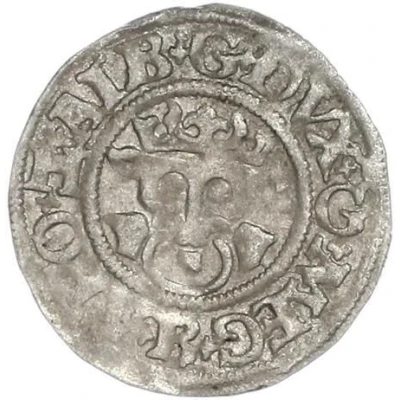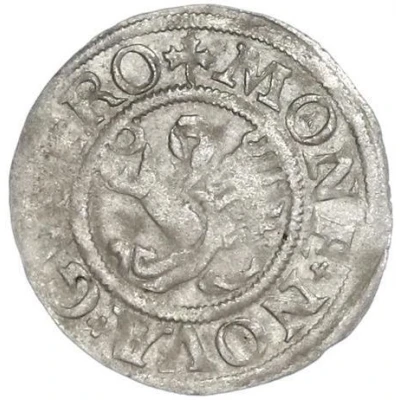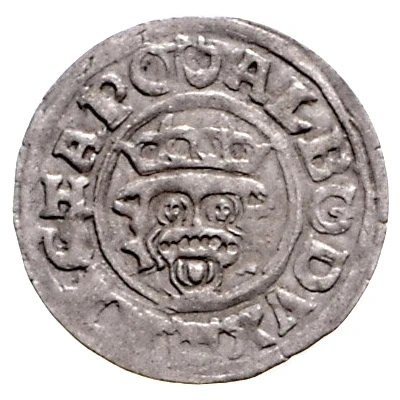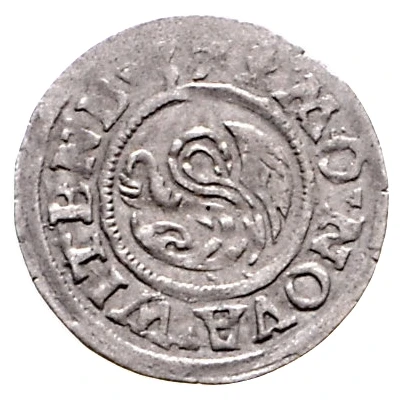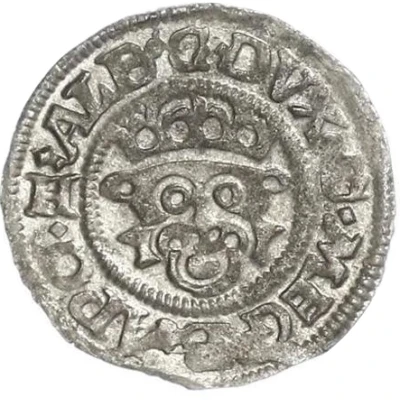
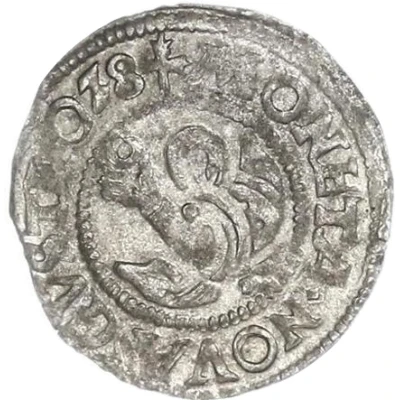

© WAG Online Auktions
1 Dreiling - Albert VII
| Silver | - | - |
| Issuer | Principality of Mecklenburg (German States) |
|---|---|
| Duke | Albert VII (Albrecht VII) (1503-1547) |
| Type | Standard circulation coin |
| Years | 1528-1529 |
| Value | 1 Dreiling = 3 Pfennig (1⁄128) |
| Currency | Thaler (1348-1700) |
| Composition | Silver |
| Shape | Round |
| Technique | Hammered |
| Demonetized | Yes |
| Updated | 2024-10-05 |
| Numista | N#168606 |
|---|---|
| Rarity index | 94% |
Reverse
Arm of Stargard in circle, mintmaster's symbol at beginning of legend, date at end.
Script: Latin
Lettering: MO(NE)(TA). NOVA. GVST(R)(O)(E)(V).
Comment
Albrecht VII the HandsomeDuke of Mecklenburg in Güstrow
(25 July 1486 – 5 January 1547), was a minor ruler in North Germany of the 16th century. He also asserted claims to Scandinavian thrones based on the royal lineage of the House of Mecklenburg.
https://en.wikipedia.org/wiki/Albrecht_VII%2C_Duke_of_Mecklenburg
The name Güstrow comes from the Polabian Guščerov and means lizard place.
In 1219 the Wendish castle Güstrowe was built where the renaissance palace stands now. Güstrow is said to be founded by Heinrich Borwin II, a grandson of Henry the Lion, between 1219 and 1226 and was first mentioned in 1228 in the deed of city rights of Schwerin, confirmed by the sons of Heinrich Borwin II, who donated the cathedral as collegiate church in 1226. Güstrow was a residence of the lords of Werle from 1229 until 1436. In 1441 the first privileged shooting society of Güstrow was founded.
The host desecration-trial of 1330 ended with the burning of 23 Jews and the destruction of the synagogue. The Kapelle des heiligen Bluts (Chapel of the Holy Blood) was built on the site of the synagogue. In 1503, 1508 and in 1512 fires destroyed the town and in 1556 the palace burned down.
https://en.wikipedia.org/wiki/G%C3%BCstrow
Interesting fact
The 1 Dreiling coin from the Principality of Mecklenburg, minted during the reign of Albert VII (1528-1529), was made of silver, but it was also one of the first coins to feature a portrait of a ruler on one side and a coat of arms on the other. This design was a departure from the traditional medieval style of coinage, which often featured religious symbols or abstract designs. The use of a portrait and coat of arms on the coin was a sign of the growing importance of secularism and national identity in the Renaissance era.
